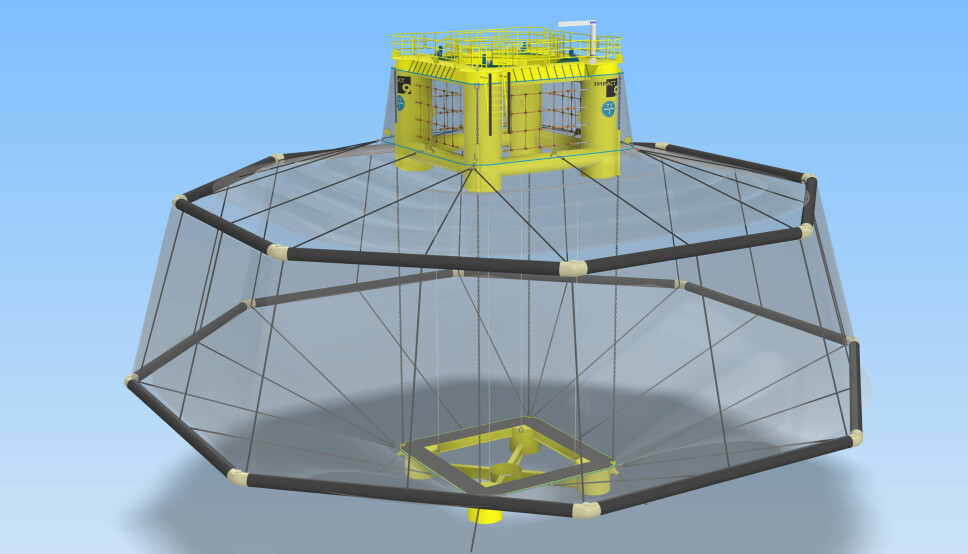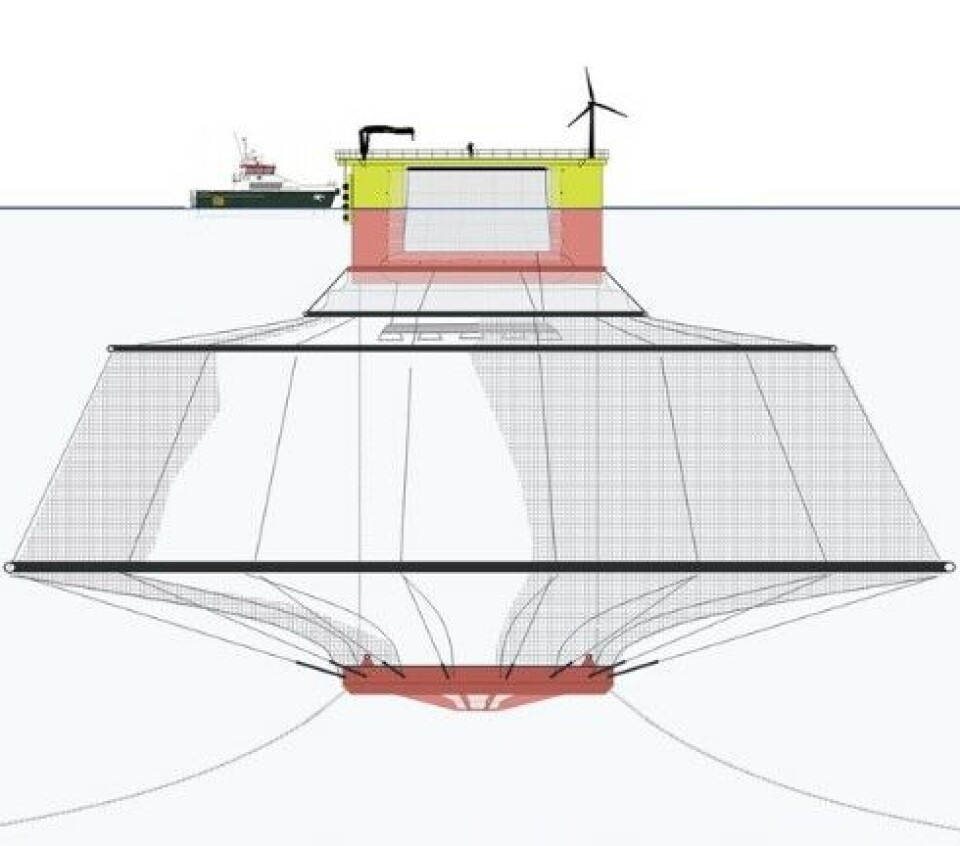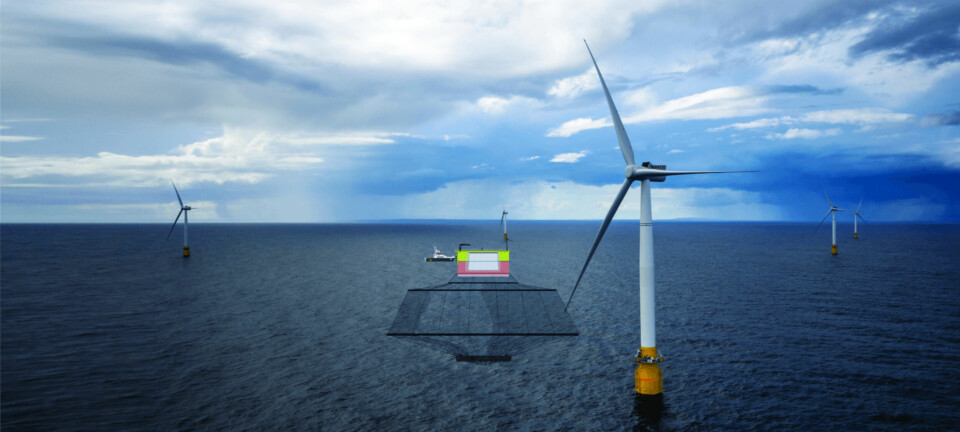
‘Affordable’ ocean fish farm moves a step closer to reality
British and Irish project team unveil design for demonstration version of novel system that may open new areas for salmon industry
A sub-scale version of a novel and affordable offshore fish farm that could enable a huge expansion of the Scottish salmon sector is likely to be built next year.
The British and Irish project team behind the Net9 farm is working with potential funders on construction of the Net9-S, a smaller version that will be suitable for technical demonstration at the European Marine Energy Centre (EMEC) in Orkney.
The full-size Net9 will be able to accommodate up to 3,000 tonnes of salmon and has been designed to be more flexible than traditional pens so that it can withstand the more powerful waves in open ocean environments. The intention is to site Net9 farms between turbines in existing and planned offshore windfarms, vastly increasing the available sea space for fish farming.
115-metre circumference
The Net9-S (the S indicates sub-scale) will be a 1:2.5 scale representation of the full-size farm and will have a collar circumference of about 115 metres, a similar size to pens in conventional fish farms.

Net9’s developers are moving ahead with the demonstration model after partners in a project funded by the UK Seafood Innovation Fund delivered the engineering design for the Net9-S.
The project, called “Inflatable Marine Products for Aquaculture Containment Technology (IMPACT)”, was led by Scottish marine engineering company TTI Marine Renewables (TTI), which applied expertise gained from previous projects in marine renewables technology.
It was supported by Net9 innovator Impact-9, EMEC, and blue economy project developer Simply Blue Group, which led work on future commercial offshore site options and consenting matters.
60-metre depth
Future commercial offshore platforms based on Net9 will be positioned in water depths of more than 60 metres, with submerged containment volumes of up to 125,000 m³.
But an experimental sea trial will first be required in order to test the novel structural elements in a lower risk, unstocked technical demonstration, and that is what the Net9-S will be used for. Impact-9 also wants to build market confidence in the solution before subsequent offshore deployments.
John Fitzgerald, Impact-9 founder and Net9 technology promoter, conceived the idea of the farm as a cheaper alternative to expensive developments such as SalMar’s Ocean Farm 1, which is built to withstand the ocean’s forces rather than absorb them.
He told Fish Farming Expert that the project team chose the demonstration farm’s scale for several reasons, including because it is sufficiently large to learn what the team need to about the novel aspects of the structure, while managing the development risk and costs of interventions to rectify unexpected events.
Matched to test sites
The scale also matches the wave climate and depth scaling at EMEC’s scaled test sites.

“We are adopting the approach from marine renewables, where sites are chosen such that the wave climate is a scaled representation of offshore. So, whereas the full-scale structure is designed for minimum 60m depth and storm waves of Hs = 12m storms, Net9-S is suitable for 24m depths and Hs = 5m storms,” explained Fitzgerald.
“We can scale up loads and movements to inform offshore design with good confidence. This extrapolates from what we have already done from our 1:30 scale tank tests and 1:5 scale beam tests.”
Can be stocked
He added: “Though small for Net9, it is large enough for stocked operations should we choose to do that after integrity tests (10,000m³ / up to 200 tonne biomass). This could help understand fish handling and grow-out as part of an existing farm operation – while developing operating models with a farmer.”
Once work with the Net9-S is complete, the team would be ready to scale up into more exposed and deeper sites with larger Net9 installations, said Fitzgerald.
“We expect commercial viability at 1:1.5 scale (40,000 m³) with optimum full scale in UK waters at 125,00m³ (90m diameter / 283m circumference) – but we will learn as we go.”
Learn more about the plans for the Net9 farm here.























































